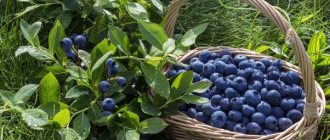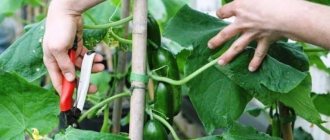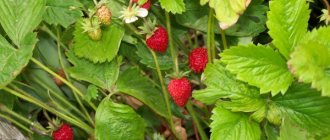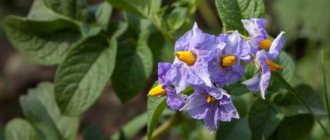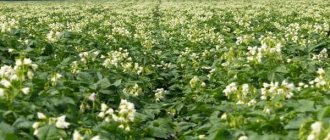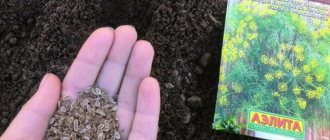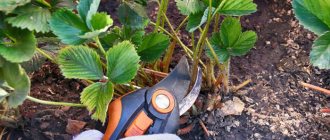Fruits and berries » Strawberries
0
491
Article rating
Kira Stoletova
Pruning strawberries in the fall is an important stage of care that helps rejuvenate the crop, protect it from disease and prepare it for winter. The autumn procedure has advantages and disadvantages that a novice gardener needs to know. In addition, there is an alternative: cutting can be done in early spring or summer, after fruiting.
Autumn pruning of strawberries - diagrams and recommendations
Trim time
In which month it is better to carry out the procedure - everyone decides for himself. Gardeners have differing opinions on this issue.
The haircut can be done in early spring, summer (after fruiting ends) or early autumn (in September). Each of the three options has advantages and disadvantages.
Spring
During cold and little snowy winters, strawberries often freeze, so in the spring, spoiled, frozen and rotten foliage needs to be cut off. In this case, under no circumstances should healthy leaves be touched.
The procedure helps get rid of pests and does not reduce yield (since the plant begins to lay buds in the fall). But if you limit yourself to only spring pruning, the leaves that have aged over time and grown mustache will thicken the plantings (with all the ensuing consequences).
Summer
In summer, the foliage and mustache are cut after the berries have left. Thus, until the end of the season, the beds will not attract pests, but at the same time they will have time to stock up on the necessary substances and form young leaves and flower buds.
The downside of this method: usually at this time gardeners have a lot of other worries and cutting strawberries is simply put off until the fall.
Autumn
This method is practiced during cold winters (in the regions of the Moscow region, the Urals, and the North-West) in order to improve the winter hardiness of plants - to provide the roots with a supply of nutrients.
In addition, many pests strive to overwinter on the leaves of garden strawberries, and autumn pruning deprives them of this opportunity.
The disadvantage of this procedure is the slow growth of green mass in spring and, as a consequence, the later appearance of berries.
Do I need to prune strawberries after harvesting?
There is no consensus on the advisability of pruning a strawberry plantation . Some gardeners are convinced that they should not interfere with natural processes and do not touch the berry garden at all. Others consider pruning after fruiting to be a useful and even necessary procedure.
Opponents give the following arguments in favor of their point of view:
- Leaf mass is necessary for the normal functioning of plants, since photosynthesis processes take place in it. Bushes deprived of leaves weaken and it is more difficult for them to prepare for winter.
- During manipulations, vegetative and generative buds are damaged, which directly affects the next season's harvest.
- It is useless to remove leaves in order to combat insect pests and various diseases, since the spores still fall to the ground, and the larvae and adults overwinter well in the ground. The next season they move to fresh leaves.
- Any intervention causes stress in plants, especially pruning. At the same time, they develop worse.
Strawberry beds need to be tidied up after fruiting
Proponents of summer post-harvest pruning put forward their arguments:
- Strawberry leaves live for about 2–2.5 months, then photosynthesis in them slows down, they turn red, become covered with spots and become useless (they waste vital juices).
- A bush deprived of ballast lays more flower buds and grows a thick green mass, which allows it to overwinter better. The plant's resistance to low temperatures increases.
- Most of the pests and pathogens that accumulated in the above-ground part during the previous part of the growing season are removed.
- Nutrients remain in the root system, which contributes to its strengthening and development. Strong and thick roots accumulate a supply of vitamins and minerals that will be actively used next year.
Sometimes they mow down all the foliage from strawberry beds completely, right to the root, using a scythe or trimmer. It is extremely important to do this as early as possible, otherwise young leaves will not have time to grow in sufficient quantities before the onset of cold weather. For several years in a row we burned out a strawberry plantation with a blowtorch, it’s very convenient - you don’t have to bother with pruners and waste extra time. But one day the procedure was carried out later than usual, already at the end of August. As luck would have it, the winter was harsh and there was little snow; as a result, the strawberries overwintered poorly and there were almost no berries.
Trimming technology
Green leaves and buds cannot be trimmed
If you choose autumn to prune strawberries, it is extremely important to leave the green leaves and buds intact.
Only damaged, old and dry foliage must be removed (a diseased leaf is easy to identify by color - it becomes yellowish, brown or brown). In addition, the procedure should include trimming the mustaches, since they take a lot of nutrients from the bushes and thicken the beds.
Errors:
- You cannot cut the entire rosette down to the base - you only need to trim the leaf blade without touching the stems.
- It is forbidden to tear off leaves, flower stalks and tendrils with your hands - they are firmly attached, so there is always a risk of pulling out the bush with its roots.
For cutting, you need to take a convenient pruner or garden shears. The tool must be clean and well sharpened.
For greater benefit, when pruning, pull out weeds, loosen the rows and hill up the bushes as necessary.
Features of various types and varieties
Both strawberries and wild strawberries belong to the same genus of plants, but different species. Very often, people who are far from gardening and newcomers to this business confuse strawberries with large-fruited garden strawberries. Experts call it Victoria after the name of the first variety of garden strawberry, which was brought to Russia several centuries ago. Its homeland is France. But despite this, it is named after Queen Victoria of Britain.
Since then, breeders from different countries have developed many different varieties of cultivated strawberries, including remontant varieties. However, out of habit, most gardeners call this berry after the queen.
For consumers, the difference between cultivated strawberries and strawberries is practically not noticeable, but these species have individual growing characteristics that should be taken into account when planting and further care.
The main differences between the plants are as follows:
- Strawberry bushes are larger than strawberry bushes, their peduncles rise above the leaf part, while in Victoria they lie on the surface of the ground due to the fact that they are not able to withstand the weight of the berries.
- Garden strawberries prefer sunny areas and do not grow well in the shade.
- Victoria is a monoecious plant; its wallpaper flowers are located on one bush. Strawberries are dioecious, and to obtain a good harvest of berries in the garden, it is necessary to plant male and female bushes in a ratio of 1:4.
- The two types of plants also differ in the size of the fruit: strawberries reach 5 grams in weight, red-violet on the side facing the sun, and pale pink on the other side. Garden strawberries are larger, the color is most often uniform red.
- Due to the fruiting of all bushes at the same time, Victoria is characterized by greater productivity, while in strawberry beds only female rosettes produce a harvest.
Remontant strawberries also have their own characteristics. Complete pruning of the leaf part can lead to a reduction in fruiting time next year, so only diseased and damaged areas are removed from the bushes. For this type of procedure, you do not need to wait a certain time.
Detailed and interesting article - Victoria Yagoda.
Unhealthy fragments are cut off immediately after they are noticed by the gardener.
The only thing that needs to be cut off from remontant strawberries in the fall is the late flower stalks. They are not able to produce a harvest, but continue to take away the strength of the bushes, absorbing a lot of nutrients and energy. This significantly reduces the winter hardiness of plants.
Do remontant varieties need to be pruned?
Remontant strawberries are distinguished from regular ones by the timing of fruiting. It produces a harvest twice a season, and some varieties last the whole summer. Therefore, a radical haircut is not carried out for this crop.
Nevertheless, plantings also need thinning, rejuvenation and preventive procedures. The bushes are regularly inspected, removing old, diseased or dry leaves as necessary. If you do not plan to propagate remontant strawberries with mustaches, trim them too.
The last flower stalks that will no longer bear fruit must be cut off in the fall. Otherwise, they will take too many nutrients from the plant.
When to prune strawberries after fruiting, in summer or autumn
The gardening community also cannot agree on specific pruning dates. However, it is generally accepted that it is optimal to do this immediately after harvesting the last berries, without delaying the process for more than a couple of weeks . The plant must have at least two months left in order to have time to recover. In the southern regions, where strawberries bear fruit early, pruning begins at the end of June. In the northern regions (Altai, Siberia, Ural), the time to prune the berry tree does not come until mid-July.
Much depends on the timing of ripening. Some late varieties that produce a harvest in late July or early August are not recommended to be heavily pruned at all.
You need to prune strawberries as early as possible so that they have time to recover.
With remontant strawberries, which bear fruit almost all summer, you cannot mow down all the foliage, or radically thin out. Such varieties try to injure as little as possible, removing only damaged leaves and old peduncles just before frost (late September, mid-October).
Aftercare
You need to get rid of clipped leaves and tendrils immediately - it would be a mistake to leave the trimmings directly on the garden bed. They need to be carefully raked, taken out and burned.
It is advisable to treat the remaining bushes with Bordeaux mixture or fungicide (even if there are no signs of serious damage, this will be a good disease prevention). The soil between the bushes is loosened and weeded, and the plants themselves are hilled.
In order for garden strawberries to gain strength after cutting, they need to be fed. As a fertilizer, you can use mullein solution, stove ash or water-soluble mineral complexes.
To make the crop survive the winter more easily, the beds must be mulched and covered. Dry pine needles, spruce branches, straw, and peat are suitable for these purposes.
Gardening Tips and Tricks
In order to increase fruiting, you should follow simple care recommendations:
- After trimming the strawberry tops in August, you should water the beds generously for a week. However, make sure that the water does not stagnate, otherwise root rot may appear;
- To ensure that the bushes are not damaged after harvesting, you need to hill up the bushes. Timely hilling preserves the growing point and prevents the crop from freezing;
- if you trim the mustache in a timely manner, the bush will form additional growth points;
- To ensure that the crop is not affected by diseases, after pruning the bushes, you can treat it with brilliant green. For 10 liters you need to use 3 tablespoons of brilliant green;
- Before pruning, it is necessary to remove all weeds;
- During the mowing period, rosettes should be planted, otherwise the bush can quickly become overgrown with young shoots.
By following simple care recommendations, you can get a healthy plant that will delight you with a large harvest and high taste characteristics.
Additional Tips
- The timing of autumn haircuts cannot be delayed. It is advisable to carry it out in early September, so that there is as much time as possible before the onset of frost.
- It is better to immediately collect the cut leaves in a special container, without leaving them on the ground. The foliage will not have to be raked later, and there will be no risky “technical waste” left in the garden that can spread diseases and attract pests.
- If the bush is completely affected by the disease, it needs to be dug up with roots and burned, and the area should be watered with potassium permanganate or treated with a fungicide.
- It is worth remembering that too many shoots on the bushes reduce the quality of the harvest (the berries become smaller). If more than 8-10 stems have grown, they need to be thinned out.
- To protect plants from early frosts, pruning dates can be postponed to the end of summer (mid-August).
- Some gardeners consider autumn pruning risky, since it is at this time that the buds of future fruits are laid. However, if you cut off not the entire stem, but only the leaf blade, the “growth points” are preserved. The optimal height of cut stems (above the ground) should be at least 10 cm.
- When pruning garden strawberries in the spring, under no circumstances should you cut off fresh leaves. The plant will begin to grow green mass with all its might, but will no longer produce ovaries. Thus, you can be left completely without a harvest.
Common mistakes
When growing strawberries, mistakes are often made that negatively affect the number of berries and their taste. Among the most common mistakes it is necessary to highlight:
- Tops trimmed too early or late. August is the most suitable period, which allows you to saturate strawberries with the necessary substances and develop immunity before frost;
- use of potassium chloride. This type of feeding has a negative effect on strawberries. Growth slows and fruiting decreases. To saturate strawberries with potassium, it is recommended to use complex mineral fertilizers;
- After picking berries and pruning, the bushes are not properly cared for. Lack of care is the reason why the bush dries out and dies;
- Watering is carried out incorrectly. To prevent the cuts from rotting, it is necessary to water between the beds;
- incorrectly selected tool. Summer residents often prune with a scythe or a knife. Such actions are incorrect, since the crop is severely damaged and becomes infected with fungal infections.
Correctly carried out pruning after harvesting can not only increase productivity, but also protect plants from diseases.
Let's sum it up
You can prune strawberries at different times: autumn, spring or summer. Each method has certain advantages, but is not without disadvantages.
The autumn procedure helps prepare the crop for winter and prevents diseases.
If you adhere to the correct technique (cut off only the old and damaged leaf plate, without affecting the stems and healthy leaves), the yield of the plantings will not suffer, but, on the contrary, will increase. In addition, at the end of August and beginning of September, gardeners are not so busy, which allows them to get serious about strawberries.
